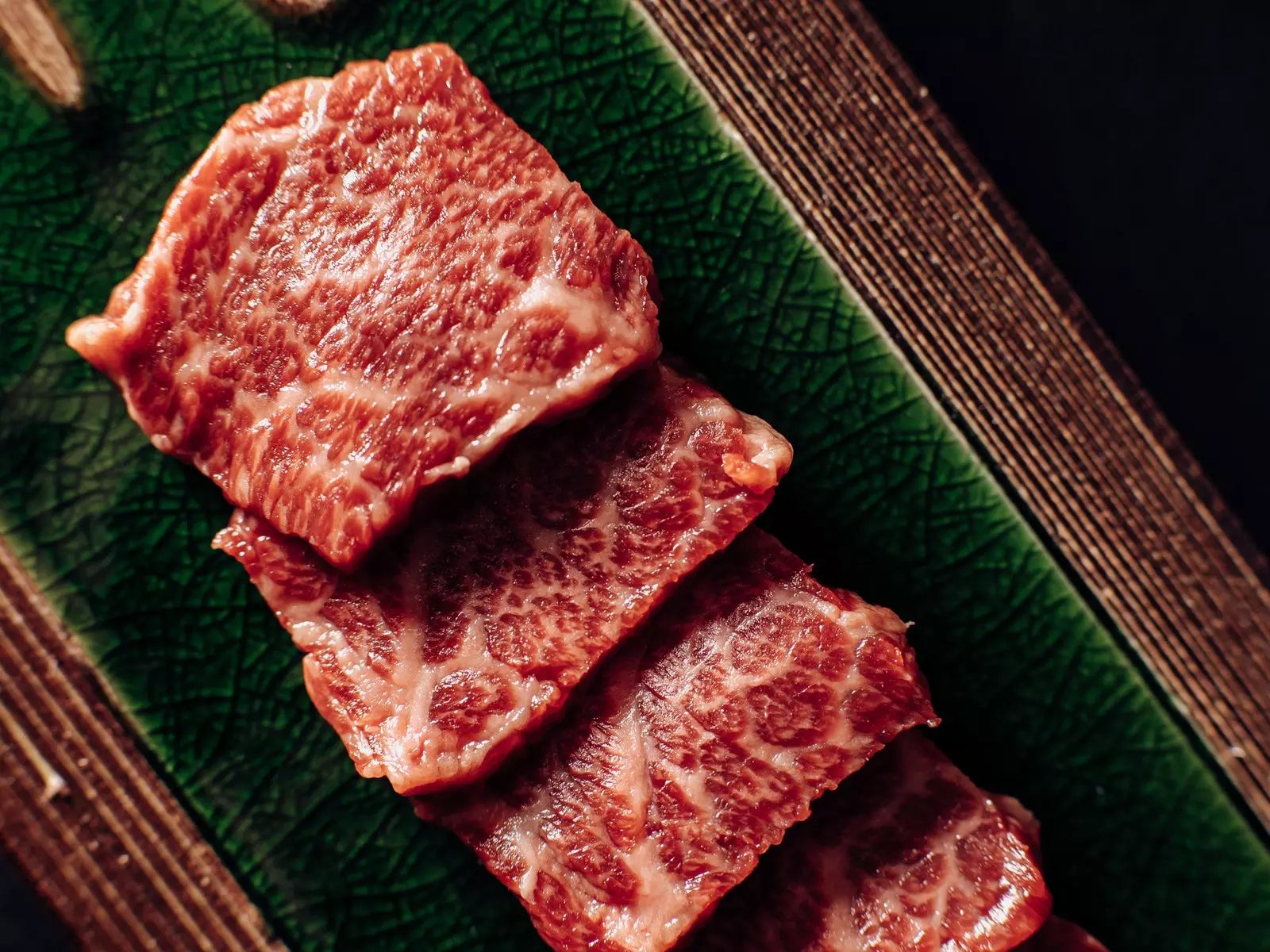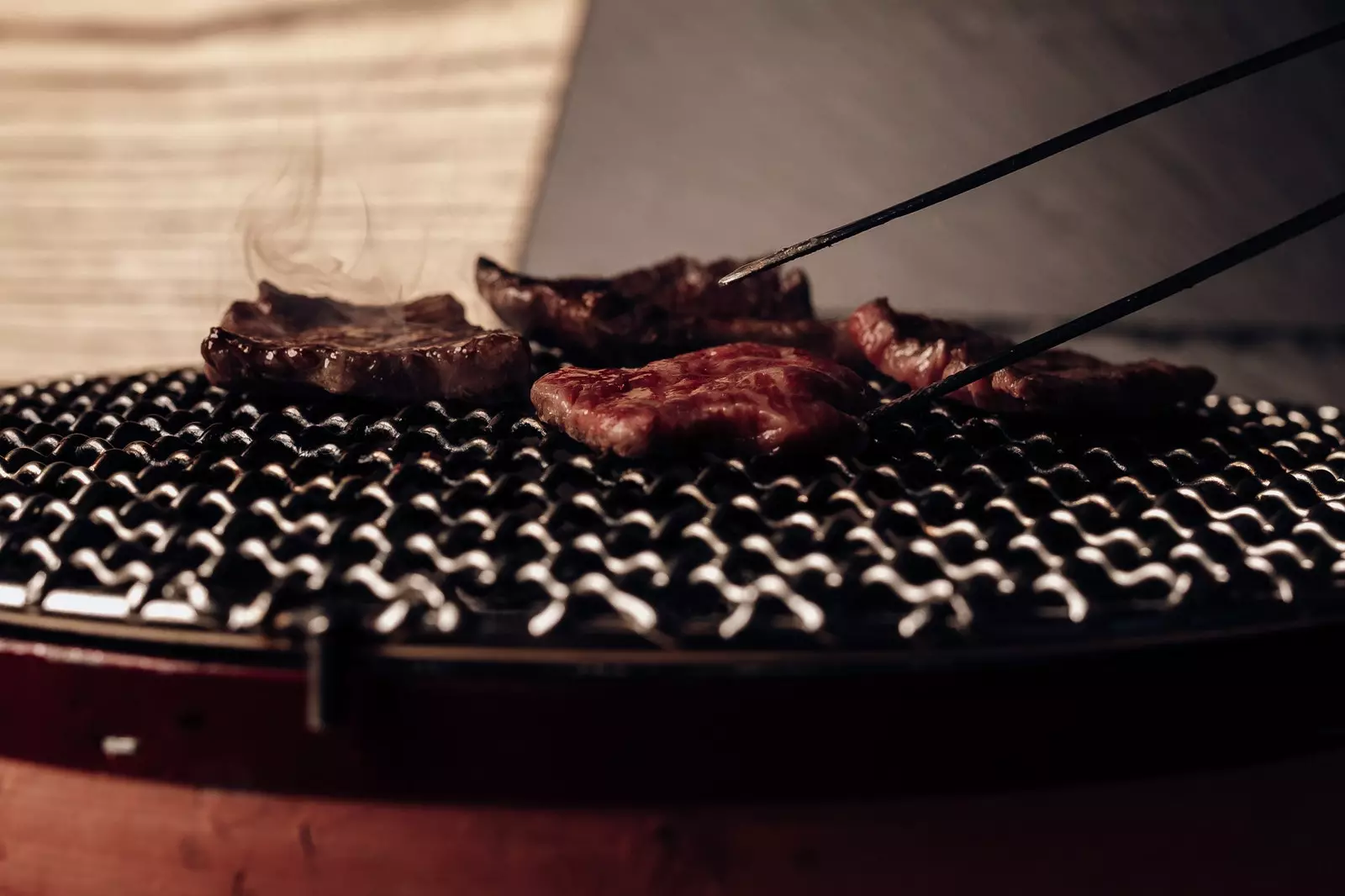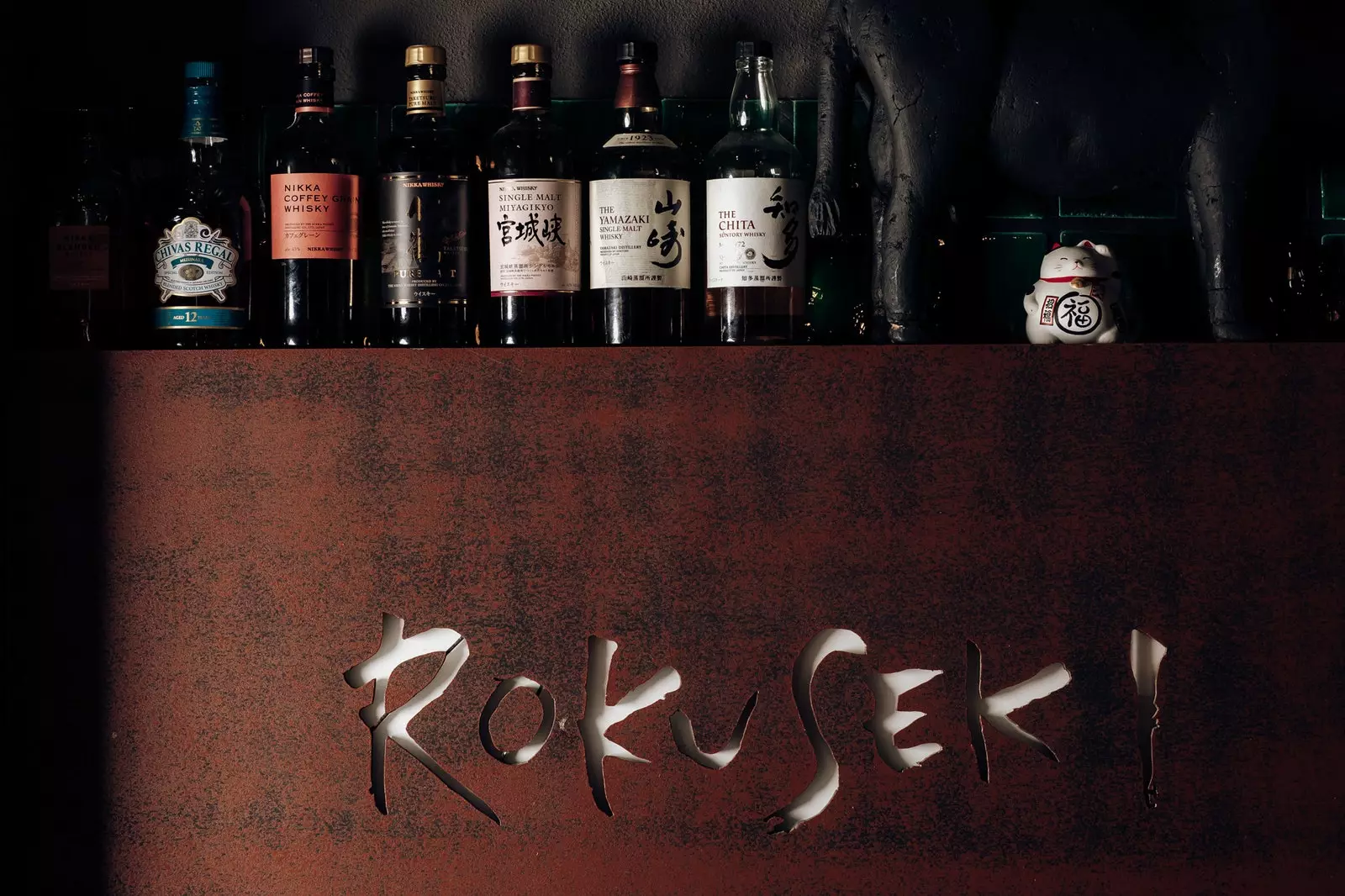
The happy nostalgia of Japanese barbecue
Yakiniku in Vigo! No, it's not a Total Sinister song. We talk about Rokuseki , the first restaurant dedicated to japanese barbecue that opens in this Galician city. And one of the few odes to the hypnotic smoke of the wagyu beef on the embers that can be accounted for in Spain.
This microcosm of hospitality allows us to enjoy the nostalgic subtlety that resides in each of the details that make up japanese bar culture ( , kaunta seki or “bar seat”) .
Diners enjoy, respect and admire the expertise of the teachers. And, at the same time, they receive exquisite treatment. In Japanese culture, the concept of 'dining experience' It goes far beyond the common places.
Natsumi Tomita, Originally from Saitama (effectively, just like Shin Chan), she has been in Spain for a decade. She although she admits that she does not get to "get used" at all.
Despite the fact that she left Japan in search of a quieter lifestyle and less tied to the strict and exorbitant Japanese work culture, she keeps missing certain elements. For example, those who make her homeland one of the places in the world most dedicated to prudence so as not to disturb social harmony.

Rokuseki, the first Japanese grill in Vigo
“Japan is very extreme. It is much easier to live in Spain. But it is a very advanced country in the organization of society. We always think about third parties: am I bothering someone else?”, confesses Tomita san, taking a short break at the bar of his intimate Rokuseki ( , which means “six seats” although they currently number 13).
"In fact, the project began as a dream of Felipe (Felipe Fernández, owner and chef together with Natsumi), who fell in love with the yakiniku culture on one of his trips to Japan”, says Natsumi.
“When he came back, since I have a lot of experience in hospitality inside and outside of Japan, I decided to join and promote the project. We started in Barcelona, but Felipe has always wanted to return to Galicia. –(The Morriña Syndrome, sounds familiar to you, right?) – And I wanted to recover something fundamental in my culture: the close and calm treatment with the client”.
And they found it, for the moment, in the ** Mercado Progreso 41 | Urban Market, ** where they have been since the summer of 2017. “In this type of cuisine, outside the Japanese borders, there are many elements and details to explain”, continues Tomita san.
“And I felt that only with a smaller and more modest format would I be able to convey all of this. Not only we would be calmer and we would enjoy our work more. The client would benefit from the special treatment offered by the Japanese bar.”

Rokuseki: the new Japanese from Vigo
A LITTLE HISTORY
What are we talking about when we talk about yakiniku? We can translate yakiniku ( ) as “grilled meat”. The exact origins of the introduction of carnivorous barbecue culture in Japan are not entirely clear. Especially because it ultimately depends on how much we want to break down the elements that make it up.
On the one hand, the introduction of meat in the Japanese diet does not exactly have a great tradition of centuries of history. His shy appearance in the palates of the most favored classes took place in the Meiji era (running from October 23, 1868 to July 30, 1912).
A very interesting moment in the reconfiguration and modernization of Japanese society, culture and politics, where Western influence began to break through the isolation that had historically characterized Japan.
However, what does seem to be the key is the penetration of Korean culinary customs. As we can confirm in the interesting Modern Japanese Cuisine: Food, Power and National Identity (Katarzyna Joanna Cwiertka, Reaktion Books, 2006) , Korean cuisine was virtually unknown in Japan until 1940. As a result, its influence did not become apparent until World War II.
In a way, it was also closely related to the influences of the black market, Korean ghettos, famines and the breaking of Japanese taboos Regarding what until then they considered 'impure food' that, on the other hand, was delicious for the Korean community generated within the Japanese occupation: the offal and the viscera.
And now they are part of contemporary Japanese yakiniku and yakitori culture. In fact, the most direct precedent of the Japanese yakiniku is considered by many to be the horumonyaki: grilled organ meats, a typical Korean wartime survival dish.
When meat rationing policies were lifted, meat replaced the offal in Korean barbecues. Its appeal to the Japanese population increased after 1949 and, especially, in the 1950s.
Even being accompanied by **typical Korean pickles such as kimchi** (kimuchi in Japanese), which until then did not have Japanese approval (its smell took over the breath in a way that the Japanese found more than uncomfortable) .
ONE PRECISE CUT AND ONE MINUTE ON THE GRILL
A precise cut 20 grams of wagyu and no more than 1 minute on the grill. The meat that crackles on the shichirin ( , “seven holes”) , a kind of clay brazier fed with charcoal, It is imported directly from Japan.
It receives the name of wagyu, which etymologically means “japanese cow ” ( ) . The kanji or ideograms that make up this word, however, are very suggestive.
Its first element, wa (和) refers to the “japanese style” , but also to concepts such as “harmony”, “peace”, “softness or delicacy”.
Natsumi and Felipe tried the result of this type of cuisine with the local product, the excellent Galician veal. However, the results were not entirely satisfactory. “The breeding method is totally different. While Galician cattle constantly go up and down hills, Japanese cattle are raised on the flat for a maximum time of 36 months”.
The characteristic marbling caused by unsaturated fats has a lot to do with this. It is a tender and delicate meat that seems to melt in the mouth when properly prepared.
In Rokuseki they offer nine types of cut.
Among them, the most popular are:
- Language (tan, ) : a classic Japanese yakiniku.
- Chest (karubi, ): this cut contains a greater contribution of fat and leaves a refined sweetness on the palate.
- Entrails (sagari, ) : the inner muscle has a more intense flavor, but at the same time immerses us in the silky depth of its grain.
In general, it is usually the favorite cut of the guests of the establishment. It is known that Japanese culture is governed by rituality in each of its expressions. And gastronomy is as important to understand the Japanese idiosyncrasy as the language itself.
In fact, it is a language in itself. In Rokuseki, each serving of wagyu is made up of 100 grams meticulously cut into 20-gram portions. The perfect size and texture to be devoured in one bite.
When we ask Natsumi about the correct way to taste yakiniku, his answer is forceful: “The meat should not remain on the grill for more than a minute; thirty seconds on each side. And it should never be cut into smaller pieces: cook, fold and eat in one bite. Accompanied by fresh lettuce and our homemade sauces.”
Tomita san insists on one of the keys that seems essential to him, which can be extrapolated to the Japanese diet in general: “Please, it is very important to mix the flavors! Eat everything at once!”
We laughed a lot with his sincere and emphatic request, because truly the Japanese can get to suffer observing the desire to separate the dishes that we Spaniards have.
And it is not only perfectly compatible, but necessary, accompany the meat with other delicious dishes that enhance the flavor and they lead us on a sensory journey that would otherwise not be complete.
THE 'STRANGE' HAPPY NOSTALGIA OF THE TASTE THAT HAS NEVER BEEN KNOWN
This phrase perhaps defines the gastronomy of Japan . And maybe also the Japanese aesthetic experience. We remember the words of Amelie Nothomb in Happy Nostalgia, referring to the Japanese concept of natsukashii ( ) :
“Natsukashii designates happy nostalgia (…) , the moment when the beautiful memory returns to memory and fills it with sweetness. Instead, her expression and voice expressed sorrow, so I interpreted it as sad nostalgia, which is not a Japanese concept.”
And in Rokuseki we strongly remember it. We forget the first, second, third... Japanese barbecue coexists with delicious homemade stews. Its simple and humble appearance captivates us with greater intensity, since it contains the umami that shakes our senses.
And that leads us through that mysterious territory. It immerses us in the melancholic beauty of what has never been known, but which seems universal to us. And that adheres to our palate like the comfort of home.
We get carried away. We rock in the scent of ribeye yakinuku (geta, ) on water lily leaf, and we combine it with negidare (leek strips with sesame oil) and with the honeyed and sweet aftertaste of its curry rice with smoked chicken.
We can't resist trying either. white rice (shiro gohan) topped with macerated and gelled egg yolk (zuke tamago) : something apparently so simple that no one should miss out on this establishment.
We also tried the delicious Kamo udon, light and deep: Udon noodles in dashi broth with duck breast and crispy leek.
And we paired the proposal with a one hundred percent Japanese cocktail, perfect to rock us in the digestion: shochu (Japanese brandy commonly distilled from rice, sweet potato or barley) and green tea. Lovers of amazing desserts are in luck.
In Rokuseki you will find out of letter original proposals such as his white chocolate egg trompe l'oeil with passion fruit. Or the classic and adorable handmade mochi filled with variants such as tangerine or creamy chestnut.
Notice to navigators: it is recommended to call to reserve in advance.
Address: Progress Market 41 | UrbanMarket. Rúa da Ronda de Don Bosco, 41 (36202 Vigo, Pontevedra) See map
Telephone: 652670310
Schedule: Tuesday to Saturday from 13:00 to 15:30 and from 20:00 to 00:00. Monday from 20:00 to 00:00.
Half price: €25-30
